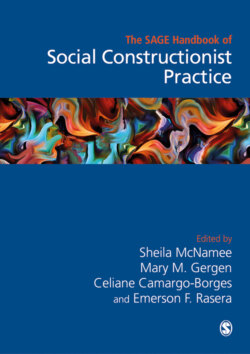Читать книгу The Sage Handbook of Social Constructionist Practice - Группа авторов - Страница 138
На сайте Литреса книга снята с продажи.
Researching Excessive Behaviours
ОглавлениеExcessive behaviours are common, practised excessively and tacitly, and often experienced as unacceptably familiar, as ‘addictions’. We draw from examples of inquiries into excessive behaviours (Mudry, 2016), specifically gambling, to demonstrate how we have researched socio-material practices. We aim to show how to reflexively probe and uncouple the ways socio-material practices are tacitly reproduced to create and sustain gambling, so that individuals can better change practices they deem are no longer acceptable.
In Tanya's original study, participants who self-identified as feeling ‘stuck’ in, or having concerns related to eating, Internet use, or gambling were interviewed about specific practices they deemed important to sustaining or interrupting these concerns. Nicolini's (2012) orienting questions were used to attend to the doings, sayings (beliefs, ideas, talk within the practice), timing, tempo, embodied choreography, objects, and place (see Mudry, 2016 for details). Through analysing interview transcripts, we zoomed out to examine participants’ social worlds and arenas to consider which conditions and practices were most relevant or salient to our inquiry, while zooming in to see how unacceptably familiar practices are sustained. For Nicolini (2012) ‘zooming in and out is achieved by switching theoretical lenses, the result is both a representation of practice and an exercise of diffraction whereby understanding is enriched through reading the results of one form of theorization through another’ (p. 219). Here we use data from an interview with one participant, ‘Tom Jackson’ (his chosen pseudonym), to illustrate how researchers might examine socio-material practices by zooming out and zooming in, through using lenses afforded by the earlier mentioned assemblage and network approaches.
